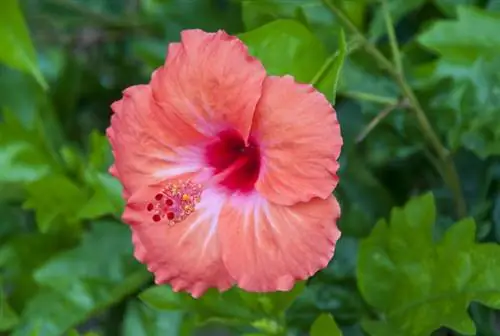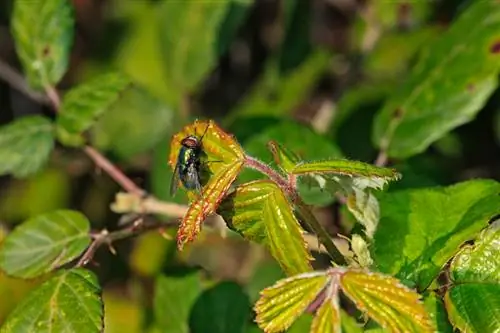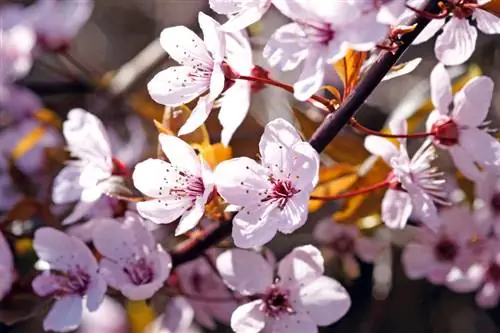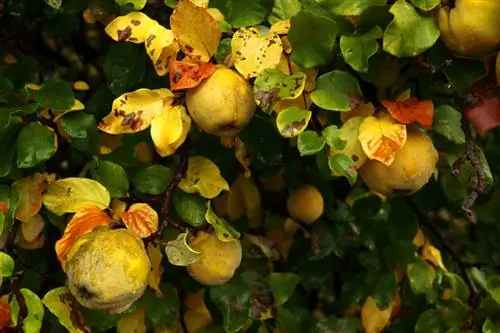- Author admin [email protected].
- Public 2024-01-05 20:48.
- Last modified 2025-01-23 11:19.
Rose marshmallow and indoor hibiscus are generally considered robust plants. However, they can also be affected by diseases, often caused by care errors. Once the diseases have been recognized, they can be easily treated.
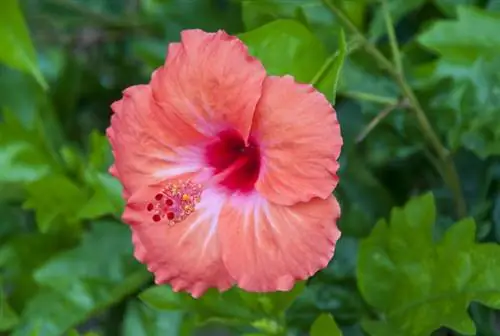
What diseases can affect hibiscus plants?
Hibiscus diseases can be caused by leaf spot fungus, leaf thickening, yellow spot, chlorosis or pests. It is important to remove affected leaves, adjust the location, add nutrients and treat pest infestation with appropriate products.
Leaf spot fungus
You can recognize leaf spot fungus by irregular, brownish spots on the leaves. The affected leaves are removed. No special treatment is necessary.
Leaf thickening
Thickened leaf veins can occur in indoor hibiscus, bot. Hibiscus rosa sinensis. Although they do not damage the plant directly, affected leaves do not look nice either. The cause of this deformity is an incorrect location. If you place your plant in a warmer place, the thickenings will disappear on their own.
Yellow spot disease
Single yellow spots on the hibiscus leaves indicate yellow spot disease. This viral disease is easily transmitted to neighboring plants, so you should place the affected hibiscus alone if possible until it has recovered. You must immediately remove affected leaves and dispose of them with household waste.
Chlorosis
Yellowish leaves can be caused by chlorosis. This is caused by a lack of nutrients and an unsuitable location. The hibiscus is often too dark and too cold; a warm, bright place on the windowsill helps here, but not in the blazing sun. Liquid fertilizer and, for garden hibiscus, additional compost provide your hibiscus with sufficient nutrients.
Damage caused by pests
Pests such as aphids and spider mites can further weaken the hibiscus. These usually suck on buds and fresh shoot tips and must be collected immediately. The plant is then treated with home remedies or special pest control products (€8.00 on Amazon) from the garden or hardware store.
mistakes
Supposed plant diseases often turn out to be avoidable care errors.
-
If the hibiscus drops its flowers, it is not a plant disease. This is more likely due to lack of water, stress or moving the plant.
- If the hibiscus leaves its leaves hanging or drops them, you should simply water it again. The garden marshmallow in particular suffers from longer, dry phases.
-
Wilted, curled and possibly yellowish leaves are caused by waterlogging. To prevent it from forming in the first place, always pour off any excess water in the pot or saucer. However, if the
roots are already affected by rot, the only solution is to repot.
Tips & Tricks
No matter what diseases your hibiscus is affected by, affected leaves do not belong in the compost. Viruses in particular could spread to other plants. Instead, diseased leaves must be disposed of with household waste.

